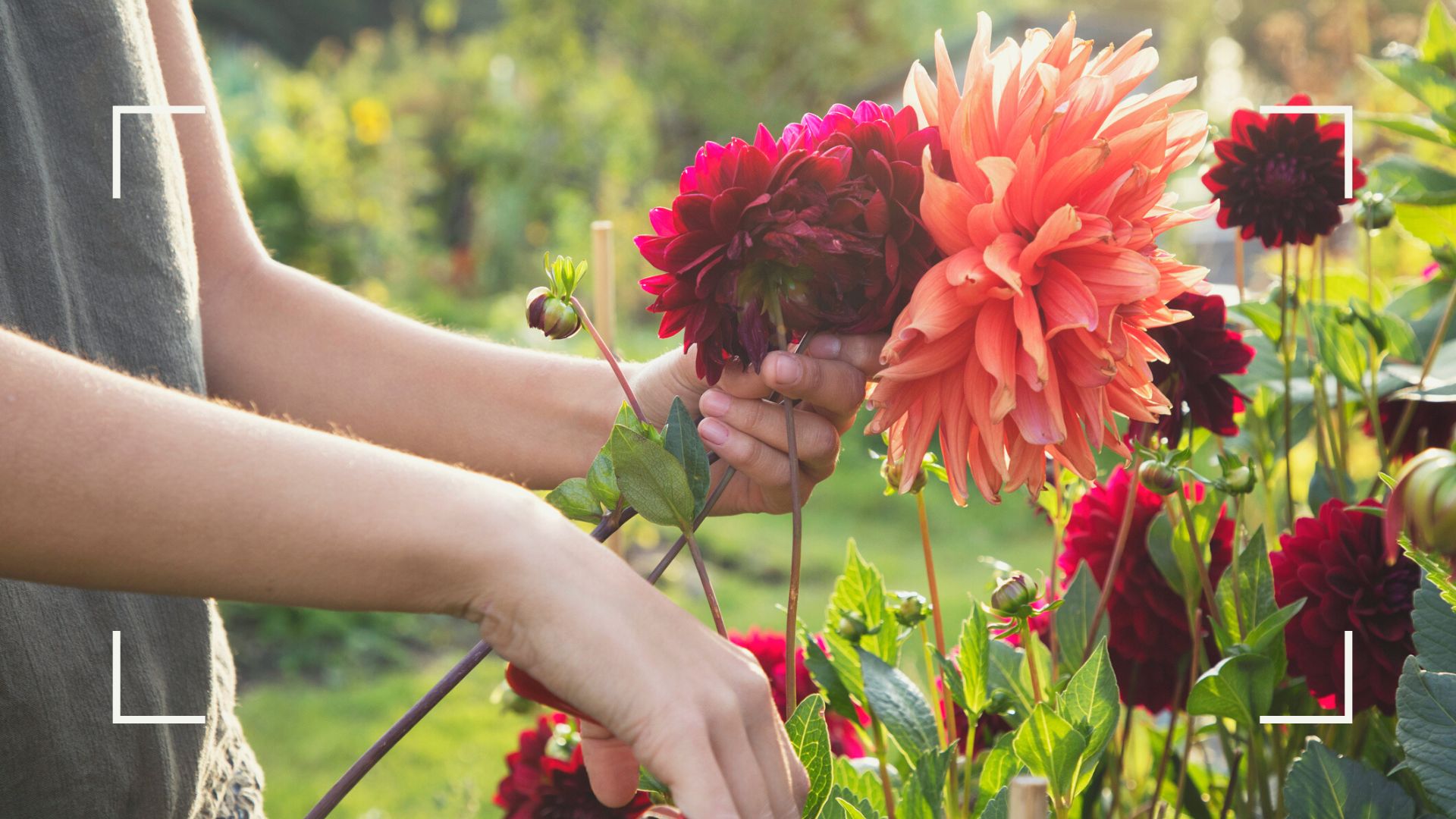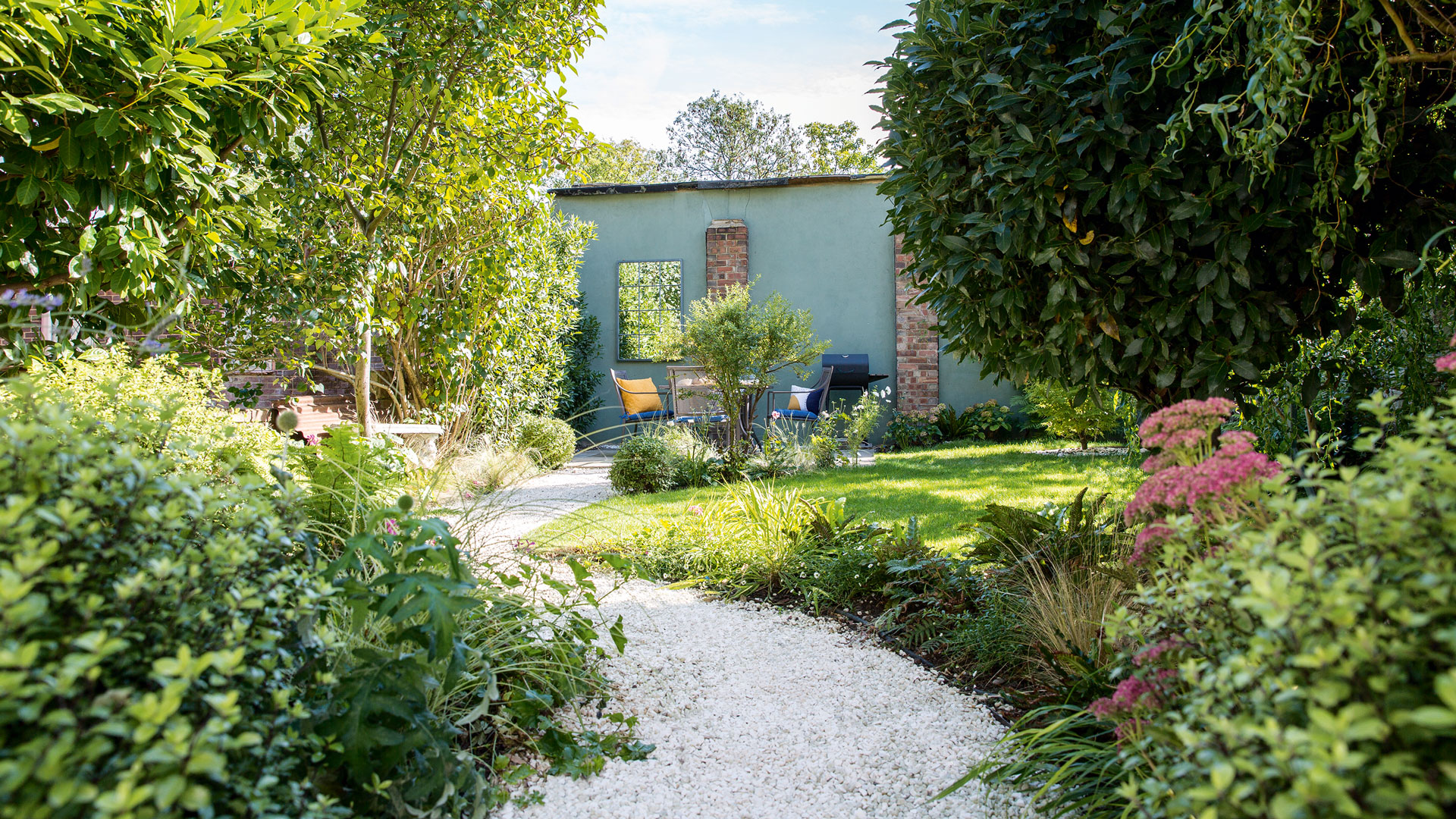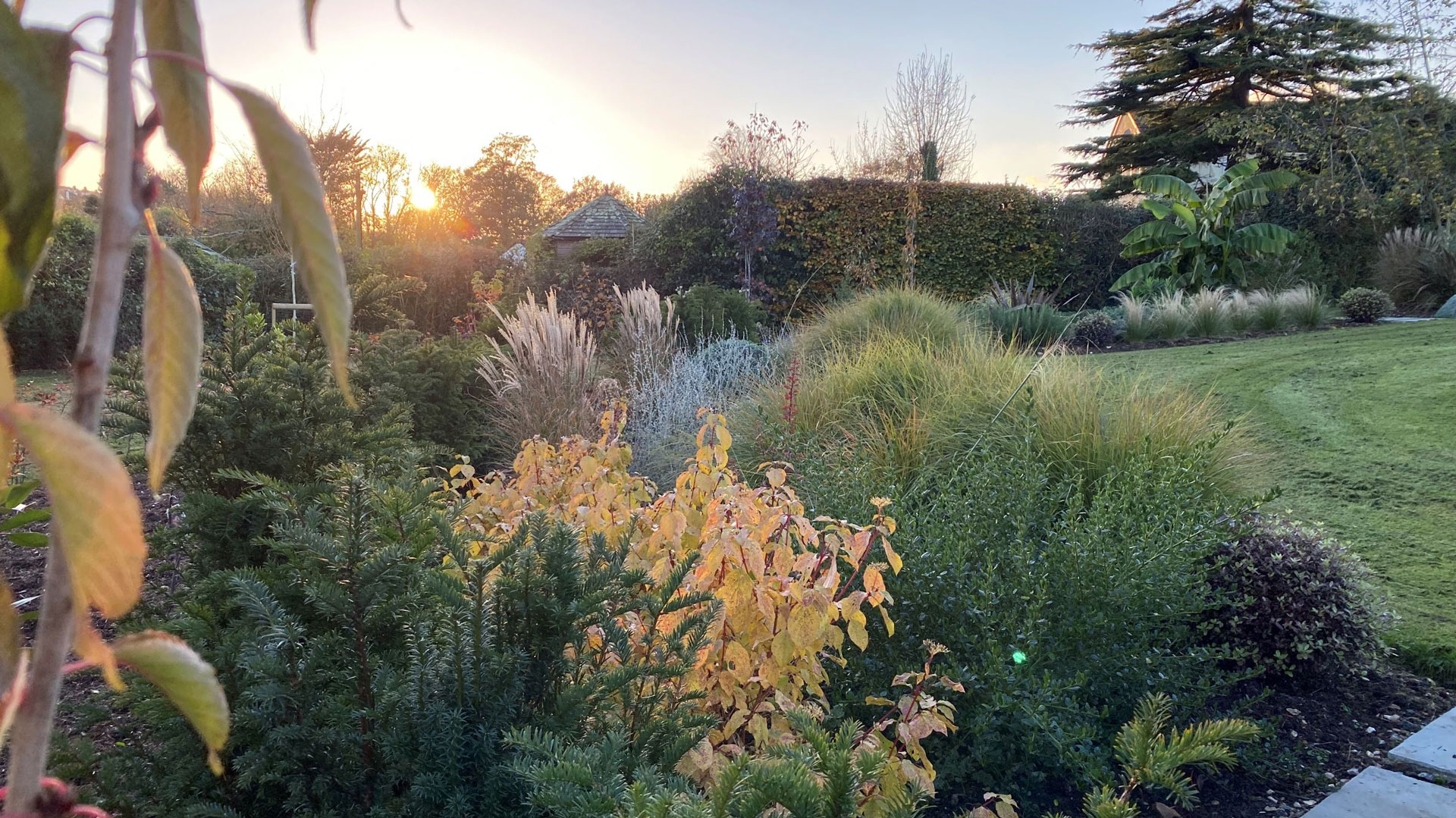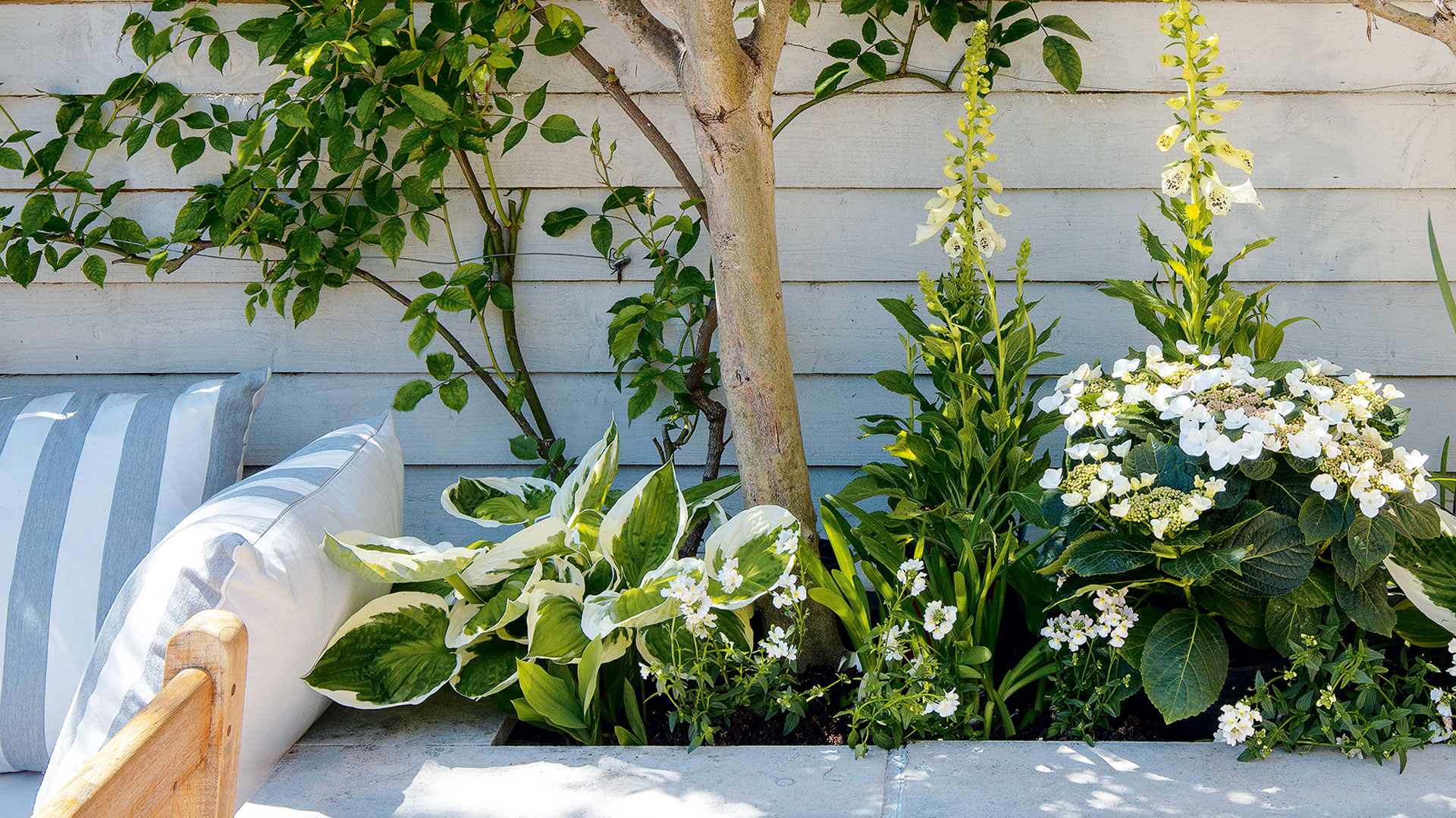Gardening tips for beginners—expert advice to inspire all budding gardeners
Garden designers share their top gardening tips for beginners, for simple and cheap ways to make any garden great


There’s a lot to learn about gardening but when it comes to the basics of planting, pruning, and feeding, there are crucial gardening tips for beginners that every gardener should know.
You don’t need a degree in horticulture to develop those green fingers, you simply need to know where to start. Luckily, our team of garden designers can certainly teach us all a thing or two about the simple rules of success when it comes to gardening, whether that's advice on the best plants for your garden or sharing the latest garden trends to help you achieve the garden of your dreams.
From assessing the soil and measuring sun exposure, to knowing when to water your plants, these expert gardening tips will turn the most novice of gardeners into pros in no time.
18 expert gardening tips for beginners

1. Make a plan
Sounds obvious, but it's easy to get carried away when feeling inspired. "As with any project, have an idea of the type of look you’re trying to achieve and work from there," advises Penelope Walker of Llevelo Garden Design.
"There’s a huge range of styles from cottage garden to contemporary, and tropical gardens to gravel gardens. It really will pay dividends to work towards a specific scheme to avoid the garden looking like a hotchpotch of ideas with no unifying theme. Sites such as Pinterest and Instagram are fantastic for getting ideas going and narrowing down what you like."
2. Assess your plot
Make sure you know what you’re working with. “Assess your garden space before buying any new plants. Take time to see where the sun and shade patterns are, which areas are dry, which are boggy, etc before making any decisions about what plants to buy,” advises Sam Proctor, at Chiltern Garden Design.
3. Look around your local area
Take a peek at your neighbor's yard. As garden designer Sam Proctor advises: “Take inspiration from front gardens in your vicinity to see what plants are thriving in the soil conditions local to you.” If next door has the best banana plant you’ve ever laid eyes on, you know your garden conditions will be suitable too.
Sign up to our free daily email for the latest royal and entertainment news, interesting opinion, expert advice on styling and beauty trends, and no-nonsense guides to the health and wellness questions you want answered.
4. Get to know your soil
"This is really important as the type of soil (clay, sandy, chalk or loam) will impact how your plants grow," says professional gardener, Penelope Walker. "Most plants will not survive in the ‘wrong’ soil so it’s worthwhile having an idea before you start investing in plants."
To 'get to know your soil', Penelope suggests: "Simply collect a small handful of soil and add a little water so you can roll it into a ball. If the ball breaks down easily with some pressure then it is most likely a sandy soil. A good plant nursery can then advise which plants are suited to this."

5. Understand how much sun your plot gets
Light and shade will determine what you can grow, because you may need tough plants if your plot lacks sun. "As with the soil type, the amount of sun or shade a border has will have an impact on the plants that will grow happily there," explains Penelope Walker. "As a general rule of thumb, plants with large leaves tend to prefer shadier spots while those with narrow or small leaves will grow better in sun."
6. Position larger plants first
Begin by planting the largest plants. "Start with thinking about where a tree (or trees) could go first. Trees will take up the most amount of room and will be difficult to ‘squeeze in’ later on," says Penelope Walker.
"Bear in mind overhead cables and avoid planting too near the house. Trees are a fantastic plant for any garden; they offer a home and food for wildlife and will make the garden more interesting overall. There are plenty of smaller trees out there if space is limited too."
7. Set your boundaries early on
“Screening an unlovely fence or trailing climbers up an ugly wall can make all the difference to a space and set the scene for the rest of the garden” advises Sam Proctor.
“Evergreens are really useful in this function, so you’ve got a green backdrop all year round to set off the seasonal planting and seating areas in front. Structural evergreens are typically more expensive than short lived plants but are worth the investment as they will give back 365 days a year, for years to come."
8. Don’t buy plants unless your soil is ready
It’s all about the soil. “There’s nothing worse than watching an expensive plant wither in its plastic pot because the ground isn’t prepared for planting” remarks Alice Meacham, at Alice Meacham Gardens. “First, remove weeds, dig over, add soil improver...and try not to plant when it’s very hot, or you’ll have to be prepared to water every day.”
9. Don’t buy plants on impulse
Before buying plants online in excitement, plan ahead to get the best results. "Just because it looks good in the garden centre, doesn’t mean it will work in your garden" warns Alice Meacham. "Establish your garden’s situation first—light/shade, damp/dry, windy/sheltered, heavy soil/thin soil. Then choose the plants that will work for you."

10. Don’t buy supermarket plants
“These can often be left unwatered for days at a time and are unlikely to be at their best when you pop them in your basket as a treat” warns Sam Proctor. “Take a trip to your local garden nursery instead, where plants are nurtured and the staff will be able to advise you on whether they will work in your intended location.”
11. Don’t buy one of everything
When it comes to planting, there's safety in numbers. "If you’re buying small grasses, perennials and ground cover shrubs, think how plants work in their natural environment, and plant in groups—threes, fives and sevens, for instance" advises garden designer Alice Meacham. "Having groups of the same plants is often more impactful than lots of individual different specimens, which can look unfocused."
Garden designer Penelope Walker is in agreement, saying: "Most plants work best when planted as a small group. If you buy just one plant, say a Lupin, it will soon get lost in your borders and several plants of different varieties will create a fussy border. Whereas several of the same plant grouped together will have a much bigger impact. If space, look to repeat these groups throughout the borders to create a much more stylish and yet naturalised look overall."
12. Give your planting some structure
The world’s most beautiful gardens always have a sense of curation. "By this we mean make sure that you include evergreen (those which don’t lose their leaves over winter) plants," explains Penelope Walker. "I’m a big fan of including ‘balls’ or ‘domes’ such as Pittosporum ‘Golf Ball’ in the borders. I’ll place them at intervals throughout the garden. This is particularly important for borders near the house where the view of the garden can be seen throughout the year."
13. Consider how the plants will flower in turn
Plant with a timeline in mind. "This is better known as creating ‘successional interest’ i.e. as the blooms of one plant are going over, the plant next to it is coming into bud," explains Penelope. "This ensures that you have beautiful planting throughout the year."

14. Understand how much your plants will grow
Don't get caught out by a plant taking over the entire backyard. "Most plant centers will sell plants in 2 or 3 liter pots. This includes shrubs which will grow much bigger in time," warns Penelope. "Make sure that you know what the eventual height and spread of the plant will be so you can plant allowing for its growth. Plant to grow, not to show!"
15. Follow your heart
Remember, it's your garden therefore your choice and one of the best gifts for gardeners is the freedom to be creative. “There are lots of trends and key ‘looks’ for gardens that you may be swayed by. Don’t forget, your garden, your rules, and if you would like garden gnomes everywhere, you go for it!” exclaims Eliza Gary.
16. Water, water, water
Watering and knowing how to look after your plants is key to any garden's success. "It can take a while for a plant to get its roots in and become self-sufficient," says Penelope. "With the long spells that we have without rain, it’s really important to get out and water to ensure your plants survive. It’s best to do this first thing in the morning or last thing at night but never during the middle of the day.
"Small plants will need a little water more frequently whereas larger plants such as trees are better with a good soak twice a week. Don’t forget to water the roots, not the leaves."
17. Be patient
Remember you’re in it for the long haul. Patience is a virtue when it comes to any planting, you need to allow for things to establish.
“Gardens take time to mature, and the best gardens are planned and planted over the course of a number of years,” explains garden designer Eliza Gary. “This means that you can spread the workload and cost of your garden over a period of time. Gaps in new gardens can be filled with annuals grown from seed, until other plants grow and fill the gaps. Plan for the eventual size of plants so you don’t end up with crowded flowerbeds that need rejigging."
18. Don’t be disheartened if things fail
Like all aspects of life, sometimes things don’t go to plan but don’t be put off gardening—keep planting and carry on. “Gardening is all about trial and error, and learning from our mistakes” says Sam Proctor. “Even experts have plants that don’t thrive or seeds that won’t germinate."
"Take heart from your successes, try again. And if it’s still not working, look again at your conditions and ask yourself if you’re trying to plant the right plant in the right place.” Wise words.
How do you prune properly?
Every gardener should know how to prune but are you doing it properly? Celebrity gardener and author of My Houseplant Changed My Life, David Domoney says, “When it comes to pruning, it’s a great time. Most things you’re pruning to remove dead, diseased and damaged branches in shrubs, roses and trees.'
But when it comes to pruning hedges, the RSPB advises against pruning between March and August because of birds’ nests, and David agrees. He added, “It’s not a great time for cutting hedges and the like, because we’ve got to be wary for birds.”
But when it is safe to prune, you don't need to hack away at your hedges like crazy—David recommends we pay attention to the angle of the cut. For example, if the cut slants to the left, the growth will follow that direction. And whatever you do, always prune to an outfacing bud.
But you'll be pleased to know there is one handy trick that will ensure you always prune trees correctly, and that’s with the help of a wine glass—whether it’s empty or full is up to you, but envisage the shape of a wine glass and that is how you should trim trees. “Always try to keep them almost like a wine glass”—as in their shape. This will encourage growth, “around the outside, and free of crossing branches in the middle,” explains David.
How can I tell if a plant is dormant or dead?
Plants can be a great pick-me-up (especially the top 10 plants to boost your mood), but it’s not fun if they suddenly wilt on you. And it’s all down to how good you are as a plant parent.
David reports that he is often asked, “How do you tell if a plant is alive or dead at this time of year if it hasn’t come into leaf?” And he has an easy way of finding out. He says, “All you need is an expensive bit of equipment. It costs a penny—it is a penny!”
He uses a 1p coin to scrape away a small patch of the bark on a branch, to determine the health of the plant. If it’s brown under the bark, it’s considered dead and if it’s green or white (depending on the plant) it’s still alive and well.
This easy hack is something every gardener should know as it will save you time and money when it comes to spotting the shrubs in your garden that needs a little TLC and which need to be ripped out completely.
How do you feed plants naturally?
The type of food we eat determines whether we’re healthy or not, and it’s the same for plants. Feed them natural food and they will flourish, feed them processed food and they will struggle.
Something else every gardener should know, David stresses, is the importance of healthy soil for feeding plants. “Healthy soil is a healthy garden. Collect up some nettles, put them a bucket, and let that stand for about seven days for a good source of nitrogen to boost the foliage of your plants—when you use the water that’s rotted those down.”
Alternatively, he suggests growing comfrey or collecting it on your next woodland walk, as it is a “good source of potassium, which is good for fruit and flowers.”
And did you know that not only are bananas a great source of potassium for humans, but that their skins should be saved if you want to give your roses a natural boost? “The skins are especially good for roses. Please feed your plants an organic matter in your soil, it helps to make plants healthy,” adds David.

Tamara is a highly experienced homes and interiors journalist with a career spanning over 22 years. Now the Lifestyle Editor of womanandhome.com, she previously spent 18 years working with the style teams at Country Homes & Interiors and Ideal Home. With these award-winning interior teams, she gained a wealth of knowledge and honed her skills and passion for styling and writing about every aspect of lifestyle and interiors.
A true homes and interiors expert, Tamara has been an ambassador for leading interior brands on multiple occasions, including appearing on Matalan’s The Show and presenting at top interior trend forecasting events such as the Autumn Fair and Spring Fair.